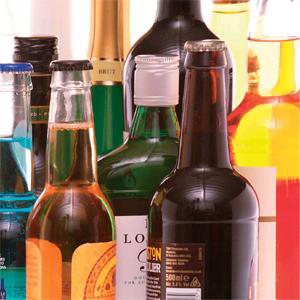When it comes to alcohol advertisements, we could use an agreement similar to the one we have with Big Tobacco.
But let’s put some punch behind it. Children are awash in media messages, and we keep missing opportunities to do the right thing.
In 1998, then-Attorney General Richard Blumenthal led the way for officials from 46 states, the District of Columbia, and five territories to sign a Master Settlement Agreement with U.S. tobacco companies. In signing, tobacco companies agreed to stop marketing to young people, and the American Legacy Foundation was formed and began to discourage teens from smoking — often with edgy, hard-to-forget television ads. The agreement also said that states would drop their pursuit of damages from tobacco-related Medicaid costs in exchange for billions of dollars paid to the states through 2025.
Those billions were too often used, said a 2010 study published in the journal Chest, to make up for budget deficits that had nothing to do with public health. An American Lung Association study said that after the agreement, tobacco companies simply changed tack, and launched aggressive marketing campaigns at young adults – whom teens look to for cues on how to behave. And tobacco companies spread their brands heavily with increased sponsorships of events.
 As toothless as the agreement has been, makers of alcohol operate under no such restrictions. And a new study says that while movie portrayals of cigarette smoking have decreased in recent years, the number of portrayals of alcohol consumption is rising in movies marketed to teens and children. The study’s lead researcher, Elaina Bergamini, of the Norris Cotton Cancer Center in New Hampshire, looked at 1,400 movies that included 500 tobacco brand appearances, compared to 2,433 alcohol appearances.
As toothless as the agreement has been, makers of alcohol operate under no such restrictions. And a new study says that while movie portrayals of cigarette smoking have decreased in recent years, the number of portrayals of alcohol consumption is rising in movies marketed to teens and children. The study’s lead researcher, Elaina Bergamini, of the Norris Cotton Cancer Center in New Hampshire, looked at 1,400 movies that included 500 tobacco brand appearances, compared to 2,433 alcohol appearances.
The study says that between 1996 and 2009, the appearance of alcohol in G-, PG- or PG-13-rated movies nearly doubled, from 80 incidences a year to 145. These aren’t adult-oriented R-rated movies where characters might be expected to take a nip, but in movies such as “Paul Blart: Mall Cop,” a 2009 PG-13 movie where a drunk bar scene was played for laughs.
This is particularly unnerving in the Nutmeg State, where the Governor’s Prevention Partnership says the state’s youth drink at rates up to 28 percent higher than their peers in the rest of the country. According to the federal Substance Abuse and Mental Health Services Administration, roughly 12 percent of the state’s young people between the ages of 12 and 17 have participated in binge drinking, defined as having 5 or more drinks at a time on at least one day in the past month.
Companies have historically paid – and paid well – to have their products prominently displayed in movies. Reese’s Pieces were nothing before E.T. came home. The latest Superman movie raked in $160 million with 100 marketing tie-ins, according to “Business Insider,” which called the movie’s lead character “Man of Shill.” This is about money, pure and simple, versus concern about public health.
This conversation is overdue. Hamden Mayor Scott Jackson, chairman of the state Sandy Hook Advisory Commission, said it was important to consider whether media portrayals of violence contribute to the incidence of actual violence. The same goes for addictive substances.
Studies already show that the more a young person sees the portrayal of alcohol consumption, the more likely that young person will drink. This is especially true for young men and especially among young people from homes where their parents or guardians drink. A study published last year in the medical journal BMJ Open said that teenagers who watch movies featuring alcohol consumption are twice as likely to start drinking compared to youngsters who don’t watch such movies. And teenagers who watch movies with alcohol consumption are much more likely to eventually engage in binge drinking.
Can we really afford this kind of entertainment?